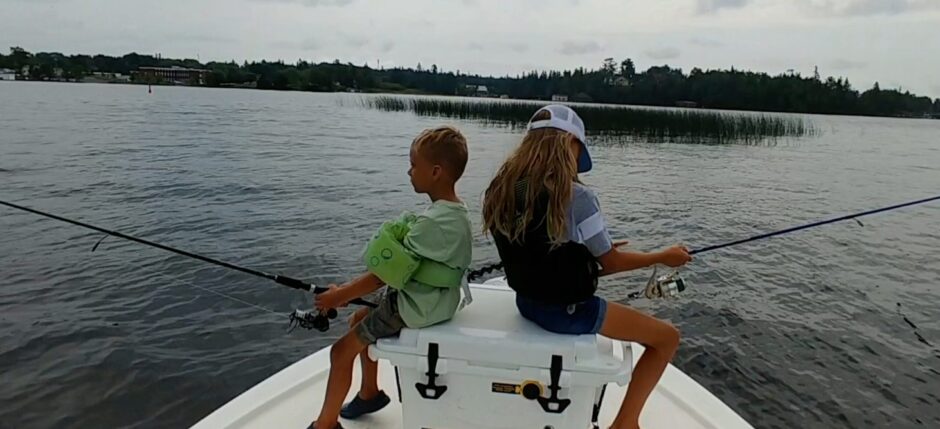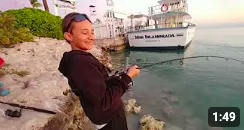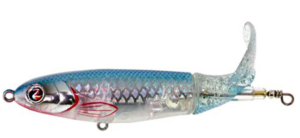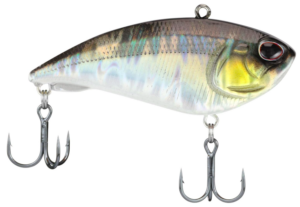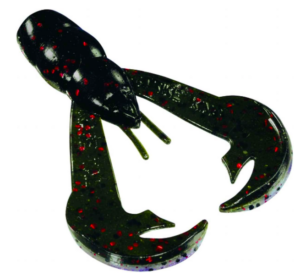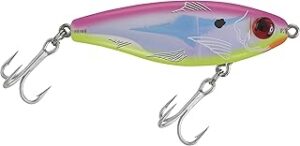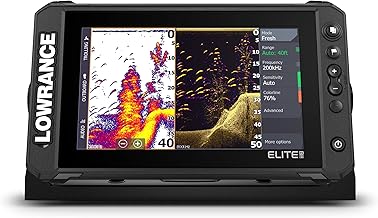Rainbow, brown, brook and cutthroat trout make up the 4 species of stream trout. Although they are called stream trout, they do inhabit lakes as well. Lake trout and steelhead are considered open water trout even though steelhead will make spring and fall runs up the tributaries just like the salmon.
Brook Trout

These fish have light spots and some red spots with blue halos on their brownish to greenish sides. Pale, wormlike markings are located on their back. The leading edges of the lower fins have white borders. Brook trout are much smaller than the other stream trout. The world record is over 14 pounds, however, most fish are in the 6 to 12 inch range. Brook trout are found in the western United States and Canada as well as in the eastern United States and Canada.
Learn More about brook trout fishing.
Brown Trout

Brown trout have 2 dorsal fins including one adipose fin, a broad square tongue with 11-12 large teeth, light pectoral fins, a squire tail and 9-10 rays in the anal fin. These fish are very popular among fly-fishermen in streams and rivers as well as shore anglers and boaters in the Great Lakes. The size of brown trout will vary based on the water they come out of. In smaller streams, a 2 to 3 pounder is considered a decent-sized fish while an 8 pounder is considered fairly average in the Great Lakes.
Learn More about Brown Trout Fishing.
Cutthroat Trout

They are named for the reddish orange slash marks on their throat. They have spots on their sides and their tail is covered with black spots. Their sides area yellowish color. Cutthroat trout can grow to very large sizes with a world record over 40 pounds. Cutthroat trout are most commonly found out west. The western United States and Canada are the areas where cutthroat trout thrive. They are known for being willing to eat a variety of presentations even when other trout don’t want to eat, which makes them a fun species of fish to target.
Learn More about Cutthroat Trout Fishing.
Lake Trout

These coldwater fish are a favorite of many anglers. Lake trout prefer water in the 48 to 52 degree range and they will find very deep water to stay in these temperatures. Lake trout are often caught in water 50 to 100 feet down. Because they need colder water to survive, they are found in a few states out west, and some northern states including the northeast and throughout most of Canada. Most anglers go to Canada or on the Great Lakes when they want to fish for lake trout.
They have light spots on a darker background that can vary from light green or gray to dark green, brown or black. Many 30 to 40 pound lake trout are caught every year in northern lakes and the world record is over 100 pounds.
Learn More about Lake Trout Fishing.
Rainbow Trout
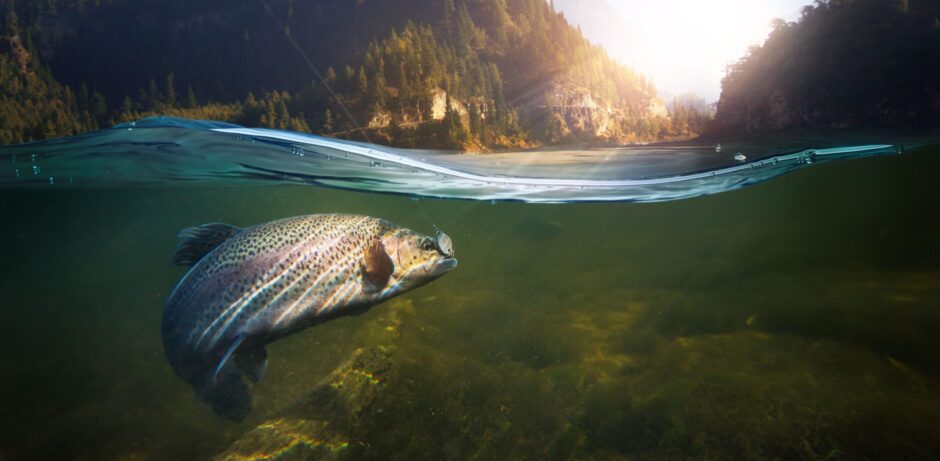
These fish are named after their pinkish stripe along their sides. They also have black spots that cover the silvery flanks and the tail. Rainbow trout are very acrobatic, known for their spectacular jumps once they are hooked. They are a favorite of most fishermen because they taste great and provide excellent fights. Rainbow trout can grow to some very large sizes. The world record is over 30 pounds. Rainbow trout are found in most states from coast to coast except some of the far southern states. They are also found throughout the western part of the country and much of western Canada.
Learn More about Rainbow Trout Fishing.
Steelhead Trout

Arguably the best fighting freshwater fish, Steelhead are rainbow trout that spend their adult lives in open water such as the sea, the Great Lakes or huge inland lakes. They migrate up tributary streams in the spring to spawn, however, many steelhead make smaller runs in the fall in the Great Lakes’ tributaries. Steelhead are long and sleek with a silvery body and a light pink stripe along the middle of their sides. The steelhead has few or no spots, while the tail has lots of spots. Steelhead grow fairly big with a world record of over 40 pounds.
Learn More about Steelhead Trout Fishing.
Other Trout
There are a lot more trout that you can catch. We covered the most popular trout in greater detail, however, feel free to search the internet to learn more about the following species of trout.

Colorado River cutthroat trout


The Dolly Varden trout is a subspecies of anadromous fish in the salmon family, but it is technically a char. Although many of the fish are anadromous, the fish also exists in landlocked waters. It is found in coastal waters of the North Pacific from Puget Sound to the Alaska Peninsula and into the eastern Aleutians, along the Bering Sea and the Arctic Sea to the Mackenzie River. Dolly Varden can be found in the deep runs and pools of creeks, rivers, streams, lakes and the sea.
In streams, Dolly Varden feed on insects, annelids, eggs, snails, clams and other small fishes. In the ocean, they feed primarily on other fish such as smelt, herring, sand lance, sculpin, flounder and cod. Fishing for Dolly Varden can be a lot of fun on light tackle. Small spinners, dry flies, streamers and salmon eggs work well in streams and lakes. Dolly Varden taste good and they are typically fried in a pan.




Snake River fine-spotted cutthroat trout



